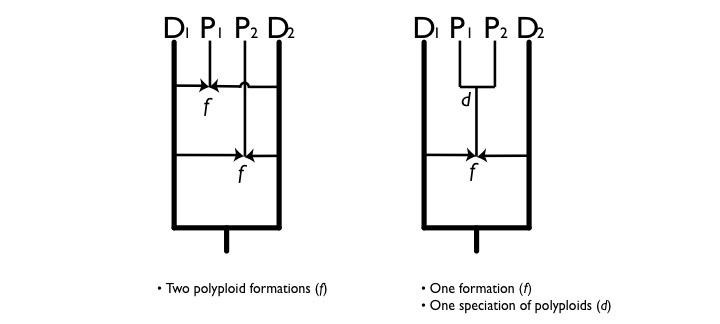Are polyploids dead-ends, on evolutionary timescales? Given that polyploid lineages are common and often ecologically highly successful, this may seem like a silly question. However, there is not necessarily a contradiction here–instead of polyploids themselves diversifying (the scenario on the right, below) polyploids could be common because they form frequently (even if they subsequently tend to go extinct quickly; the scenario on the left) and they could enjoy short-term successes yet still be prone to longer-term evolutionary failure.

The (relatively limited) empirical data that we have available suggests that, counter-intuitively, polyploids are indeed “dead-ends”–they tend to go extinct more quickly, and speciate more slowly, than do their diploid relatives. For example, the figure below summarizes a meta-analysis of diverse plant lineages (Mayrose et al. 2011 –see Publications)–most of the surveyed genera showed a low probability that their polyploid members speciated at a higher rate than their diploids (first panel, below) and a high probability that their polyploids went extinct more quickly than their diploids (middle panel) for a combined effect of polyploids almost always diversifying more slowly than diploids (last panel).

However, analyses like this are unable to disentangle a variety of potentially confounding effects–for example, polyploidy is often associated with asexuality, which may have its own impact on diversification processes, and allopolyploids may behave differently from autopolyploids. One of the main ongoing research projects of the lab is to develop better empirical datasets with which to examine this question.